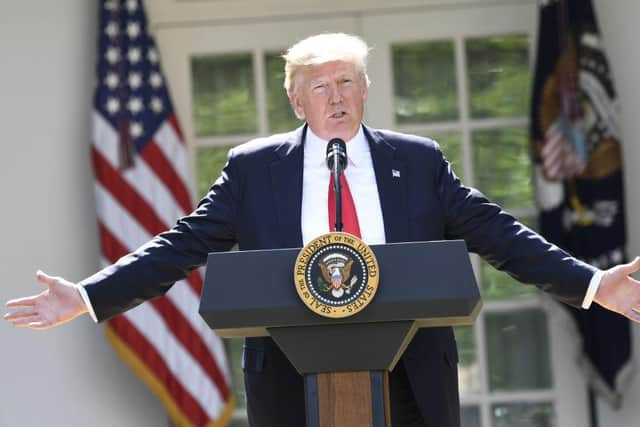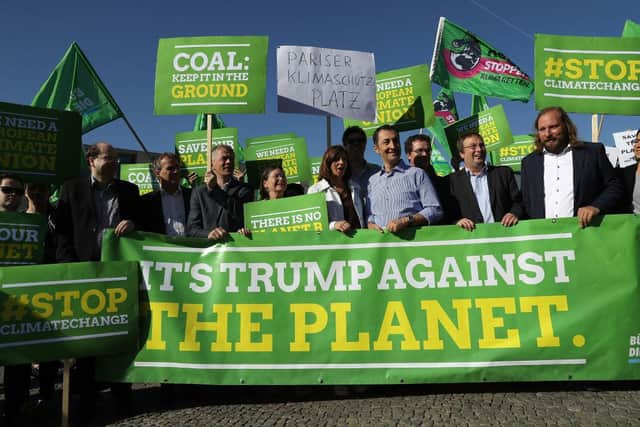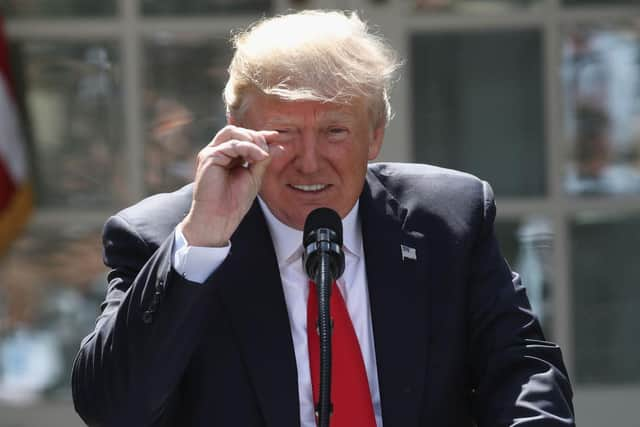Paris Climate Agreement: what is the climate change deal and why did the US pull out of it under president Donald Trump?
On the same eve of the US election, America became the first country in history to pull out of the Paris Climate Agreement.
The news went unnoticed by many, overshadowed as it was by the actual voting taking place on the night of 3 November (and the fact that president Trump actually pulled out of the deal three years ago).
But what does it mean for climate change?


Here is everything you need to know.
What is the Paris Agreement?
Advertisement
Hide AdAdvertisement
Hide AdThe Paris Agreement was negotiated by representatives of nearly 200 state parties in the French capital in December 2015, and commits countries to curbing rising global temperatures.
Its long-term goal is to keep the increase in global average temperature to below 2°c, and limit its increase to no more than 1.5°c.


If the agreement is successful, it would mean a substantial reduction to the risks and impacts of climate change, with emissions to be cut to net zero by the second half of the century.
The agreement also aims to increase the ability of countries to adapt to the impact of climate change by ensuring "finance flows” are “consistent with a pathway towards low greenhouse gas emissions and climate-resilient development."
Why is it important?
Under the Paris Agreement, each country must determine, plan and regularly report on the contribution that it undertakes to mitigate global warming.


The agreement doesn’t force any particular country to set a specific emissions target by a specific date, but any targets set out by countries under the agreement must go beyond previously set objectives.
Scientists have warned failure to curb dangerous climate change will lead to sea level rises, more intense storms and flooding, more extreme droughts, water shortages and heatwaves as well as massive loss of wildlife and reduction in crop yields, potentially sparking conflict and mass migration.
Before the announcement, national leaders, the pope and the UN secretary general were among those who had warned of the importance of climate action, and environmental and aid campaigners reacted angrily to news of the US withdrawal.
Why did Trump pull out of it?
Advertisement
Hide AdAdvertisement
Hide AdPresident Donald Trump pulled the US out of the Paris Agreement in 2017, though it’s taken three years for the country’s removal to actually take hold.
At a press briefing at the White House in mid-2017, Mr Trump said: “In order to fulfil my solemn duty to protect America and its citizens, the US will withdraw from the Paris climate accord.”
He said the deal allowed countries such as China and India to carry on polluting while the US economy was harmed, saying it was “less about the climate and more about other countries obtaining a financial advantage over the US”.
Under the agreement, the US’ voluntarily agreed to cut greenhouse gas emissions by 26% to 28% by 2025 compared with 2005 levels.
No longer part of the agreement, the US doesn’t have to do this, and also does not have to continue to contribute to climate finance.
Mr Trump insisted he cared about the environment, and the US would be the most environmentally friendly country on Earth. In 2017 he also raised the possibility of negotiating to re-enter the Paris accord or an entirely new deal on terms that were “fair” to the US.
The move drew widespread international criticism, with campaigners in the UK labelling it an “act of vandalism”.
Is any other country not in the agreement?
Trump’s predecessor Barack Obama, was the one who brought the US into the Paris Agreement in 2016, although this was one without ratification from the US Senate.
Advertisement
Hide AdAdvertisement
Hide AdThe former president described the Trump administration as joining “a small handful of nations that reject the future” by withdrawing from the pact.
Only Nicaragua and Syria have failed to sign up to the agreement and all the major industrialised nations, except for Russia, have ratified it.
Countries that stay in the Paris deal will “reap the benefits” of jobs and industries created and the US should be “at the front of the pack”, Mr Obama said.
